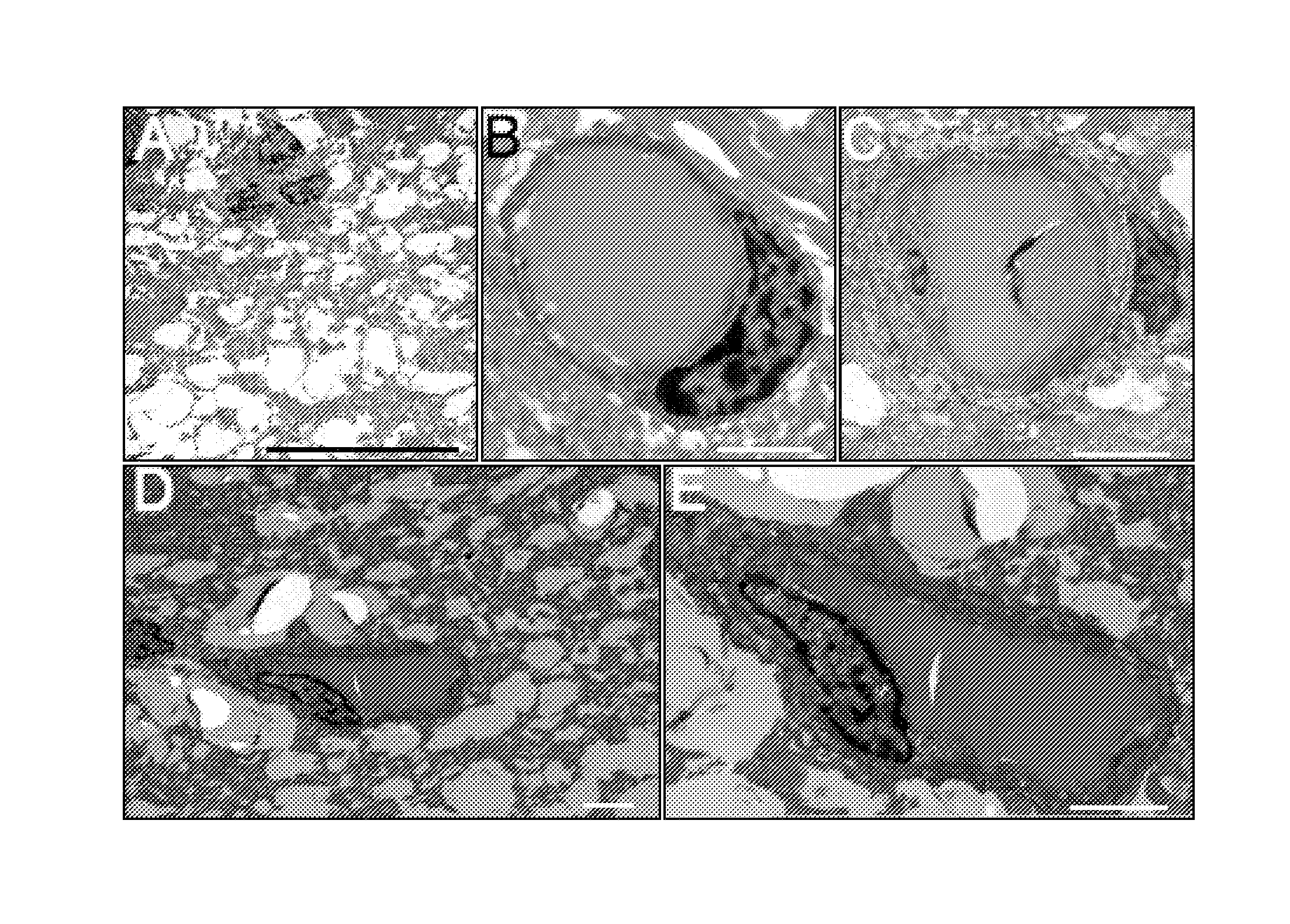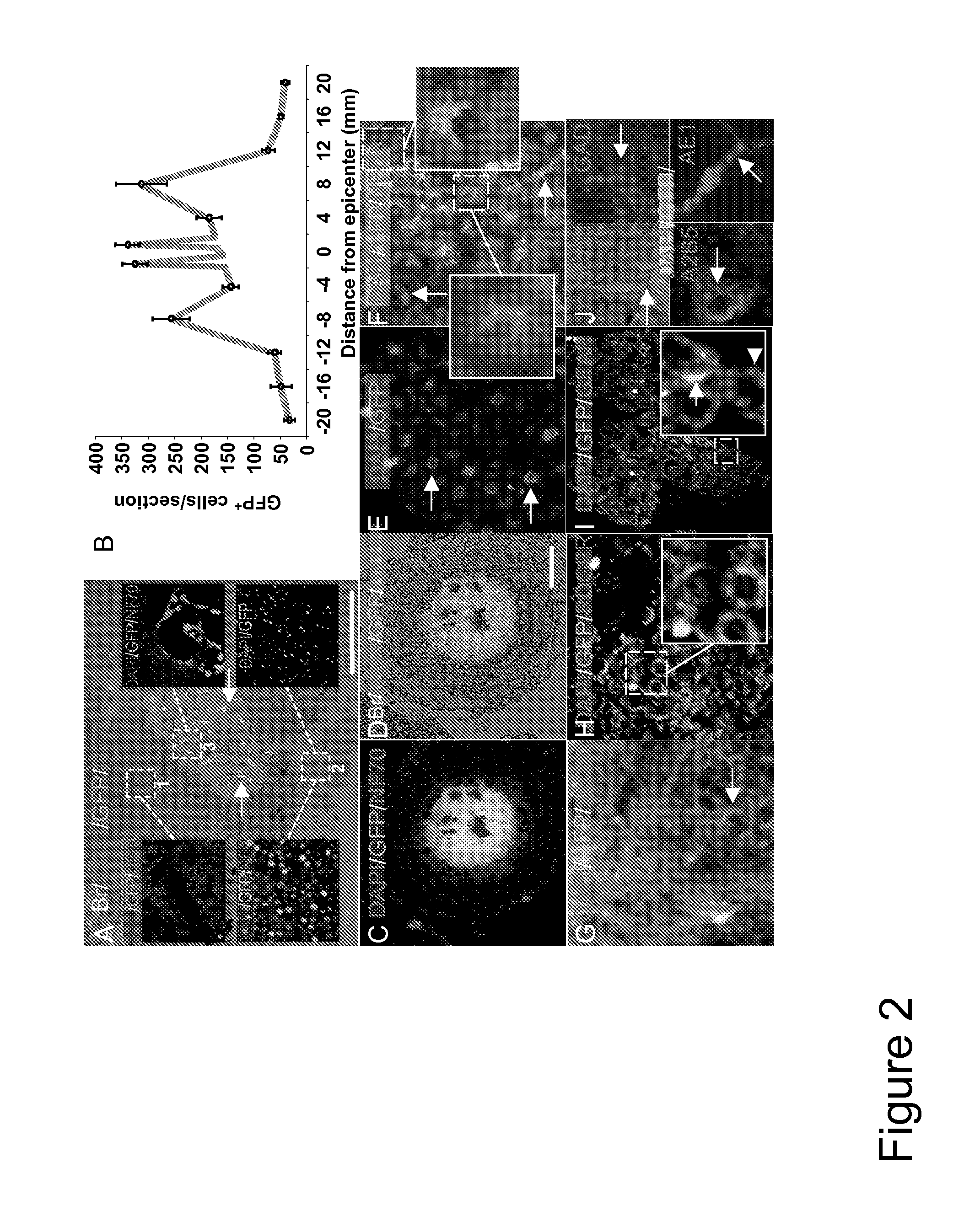Method for treating chronic nerve tissue injury using a cell therapy strategy
a cell therapy and nerve tissue technology, applied in the field of cells, can solve the problems of mass neuronal and glial cell loss, distal motor paralysis, demyelination, cavitation, etc., and achieve the effect of improving motor coordination and reducing the targeted neurodegenerative condition
- Summary
- Abstract
- Description
- Claims
- Application Information
AI Technical Summary
Benefits of technology
Problems solved by technology
Method used
Image
Examples
example 1
In Vitro Differentiation of ABMC
[0074]Six canine BM samples were isolated and cultured for 72 hours on poly-L lysine under an approved protocol. Canine ABMC separated at 72 hours were found to express CD44, CD73, CD105, CD166, CD271, but had no or negligible expression of CD34, CD38, and CD45. Canine ABMC had a flat oblong morphology (FIG. 5A) with a limited number of fibroblast-like cells that predominate the traditional culture expanded MSC. Canine ABMC (FIG. 5A) were transfected with GFP expressing plasmid at near 90% efficiency (FIG. 5B). These cells retained their pluripotent potential and could be immediately and potently induced to adipocytes, osteocytes, and chondrocytes (FIG. 5E-G). Culture of these cells in neuronal induction medium, similar to human cells, resulted in the formation of neurospheres, and morphological changes with increased Nestin expression associated with neuronal phenotypes (FIG. 5C, G-I).
[0075]We next evaluated the multilineage differentiation potential...
example 2
In Vivo Differentiation of ABMC in Canine Model
[0078]To establish a cell therapy strategy in a preclinical model, we transplanted autologous ABMC intrathecally in a canine model of severe SCI. Severe contusions to the dog spinal cord performed on 16 dogs similar to the established cat severe SCI model 24, resulted in sensory loss and hindlimb paralysis in all injured dogs (n=16) (FIG. 1H). One week after injury, animals were randomly divided into 4 groups (n=4 / group), with group A serving as controls who received no cell treatment. Group B, C, and D dogs had BM aspirated from the iliac crest, and ABMC were isolated by adherence to plates for 72 hours. Cells were transfected with GFP expressing plasmid prepared as 2×106 ABMC / Kg in 150 μl of saline, and injected by lumbar puncture. Group B animals received unmanipulated ABMC. To investigate whether in vitro pre-differentiation of ABMC to neural lineage augment their in vivo neural potential, groups C and D animals received ABMC isolat...
example 3
In Vivo Differentiation of ABMC in Humans
[0086]Preclinical studies in the severe SCI canine model revealed that the intrathecally transplanted autologous ABMC homed to the injury site, and resulted in spared white and gray matter, neuronal and axonal regeneration, neovascularization, astrocytes proliferation with significant remyelination, and functional improvement in locomotor scores, with no side effects detected.
[0087]These data led us to initiate a randomized phase I / II clinical trial to investigate the safety and efficacy of autologous intrathecal transplantation of ABMC in complete cervical and thoracic levels SCI patients. Selection criteria (FIG. 3) included patients who had completed at least 6 months of physiotherapy post injury with no spontaneous recovery. Patients studied were 9 females and 71 males, aged 16-45 years. The period since their injury ranged from 12-36 months with complete ASIA A traumatic SCI, neurological levels between C3 and T12, no evidence of neurolo...
PUM
 Login to View More
Login to View More Abstract
Description
Claims
Application Information
 Login to View More
Login to View More - R&D
- Intellectual Property
- Life Sciences
- Materials
- Tech Scout
- Unparalleled Data Quality
- Higher Quality Content
- 60% Fewer Hallucinations
Browse by: Latest US Patents, China's latest patents, Technical Efficacy Thesaurus, Application Domain, Technology Topic, Popular Technical Reports.
© 2025 PatSnap. All rights reserved.Legal|Privacy policy|Modern Slavery Act Transparency Statement|Sitemap|About US| Contact US: help@patsnap.com



